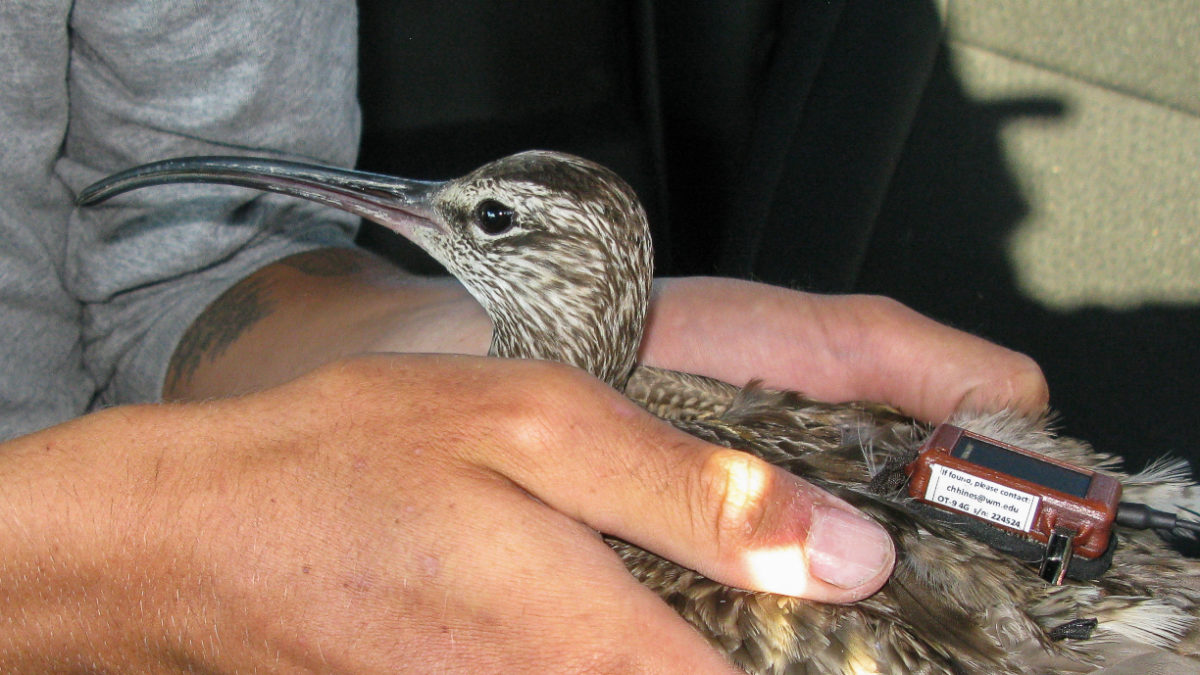Tracking Whimbrel

Trail Cameras Capture Bayside Birdlife
October 6, 2022
CCB Newsletter Photo Gallery
October 6, 2022By: Bryan Watts
10/5/22
CCB has formed a collaborative with Dominion Energy and The Nature Conservancy to better understand the risks posed by offshore wind facilities to migrating whimbrel. The two-year project will utilize the newest generation of transmitters to record flight tracks and altitude for birds flying over the Outer Continental Shelf (OCS) to assess the likelihood of interactions with turbines. The project will inform not only the Virginia offshore project, but the many offshore projects currently planned along the Atlantic Coast.

The United States is pursuing a diversified energy portfolio as one strategy to combat global climate change. For states along the Atlantic Coast, portfolios have a high reliance on energy generated from offshore wind. To facilitate the development of the wind industry, the federal government is accelerating access to wind leases along the Atlantic Outer Continental Shelf. On 1 November 2013, a commercial lease went into effect with Dominion Virginia Power for the Virginia Wind Energy Area. The lease area covers approximately 112,799 acres and its western edge is located around 23.5 nautical miles from the Virginia Beach coastline. On 26 June 2020, installation was completed on two test turbines representing the first wind turbines installed in U.S. federal waters. The Coastal Virginia Offshore Wind pilot project is designed to demonstrate a grid-connected, 12-megawatt facility within the Outer Continental Shelf. At capacity, the larger planned wind facility will generate enough energy to support 600,000 homes.
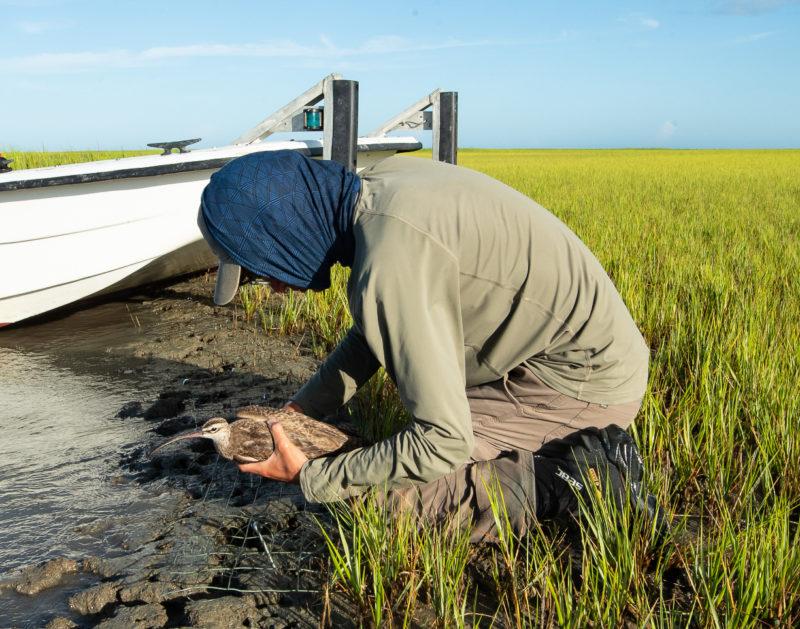
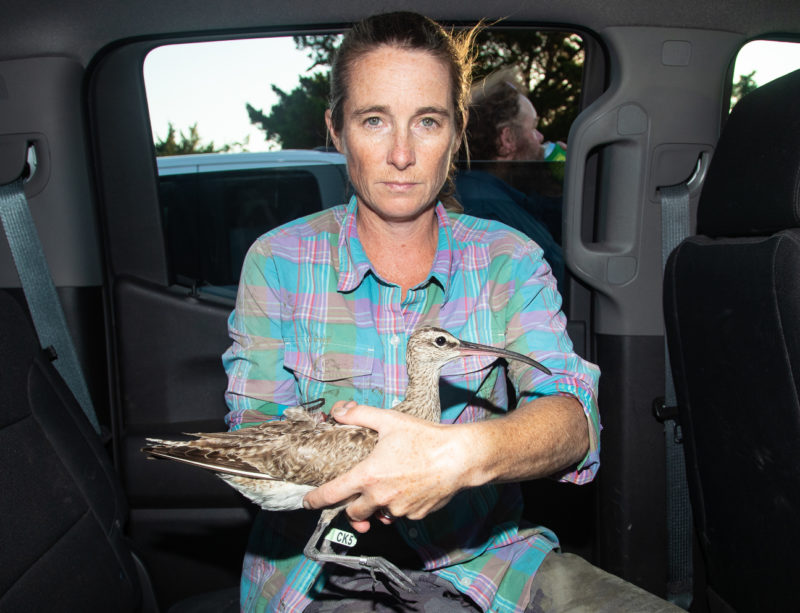
One of the ongoing concerns about the development of offshore wind facilities is the potential impact to bird populations that migrate using the Western Atlantic Flyway (WAF). Hundreds of millions of birds, including around 200 species (some endangered), migrate through the WAF each year. The vast majority of these birds are near-shore migrants that fly within one to five kilometers of the coastline. One reason for placing the wind project so far offshore is to place the project away from this major flow of birds. However, in addition to the near-shore migrants, a smaller number of species either 1) migrate or winter offshore along the coast (e.g., northern gannets, Atlantic puffins, red-throated loons) or 2) cross the OCS on their way to wintering grounds in the Caribbean Basin or South America. Included within the second category are some shorebird species.
Several shorebird species that stage along the Atlantic Coast and winter in South America make nonstop trans-Atlantic flights back and forth to wintering grounds. These species cross the OCS and could potentially interact with offshore wind facilities. Within Virginia, these species include whimbrel, eastern willet, black-bellied plover, red knot and short-billed dowitcher among others. A central question is, “Do offshore wind facilities pose a hazard to these species?”
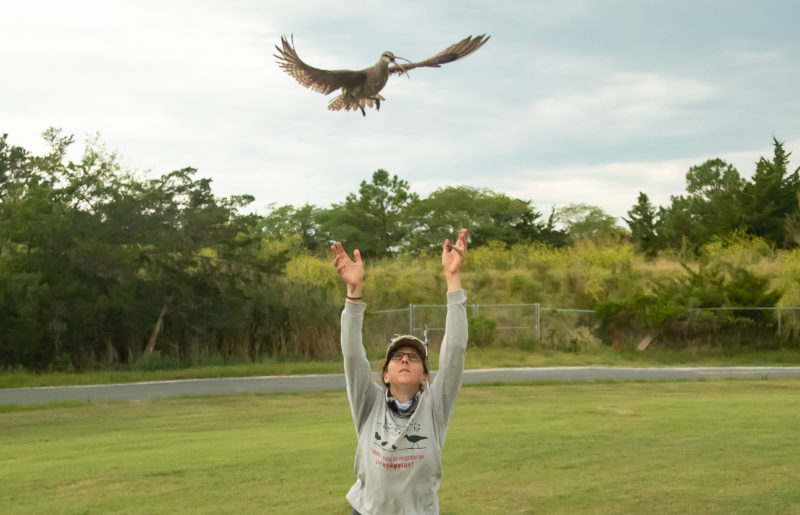
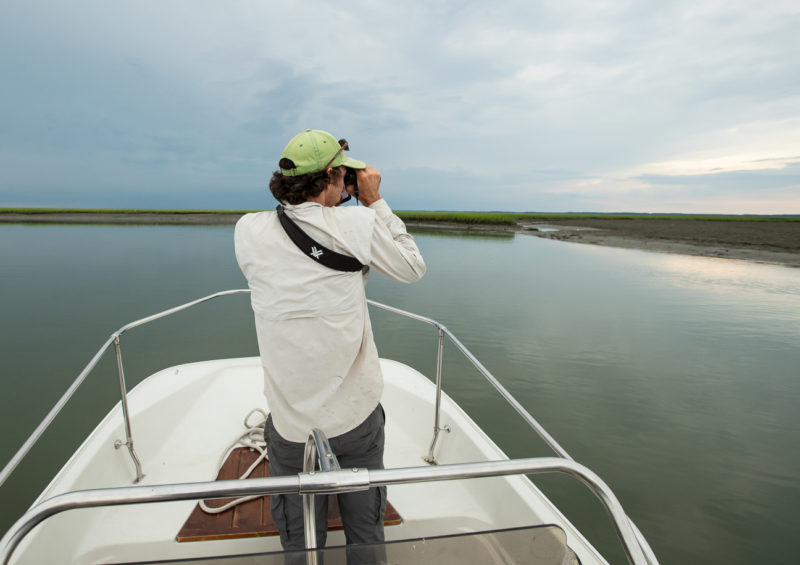
During July and August of 2022, a team of biologists from The Nature Conservancy and CCB trapped whimbrels staging along the Delmarva Peninsula and fitted 15 of them with transmitters. The transmitters record a bird’s GPS location and altitude. The objective is to produce a 3-D map of trajectories as birds launch from the coast on their trans-Atlantic flights in the fall and then as they return back to the coast in the spring. The tracks will document how many birds are flying over wind leases and whether they are flying above the height of turbines. We will deploy another round of transmitters during the late summer of 2023.
The establishment of an offshore wind industry in U.S. waters is in its infancy. These facilities are a significant part of our strategy to reduce greenhouse gases. However, our understanding of what risks these facilities pose to wildlife is also in its infancy. This collaborative project between industry, academia and the conservation community will help to inform our decisions moving forward.

